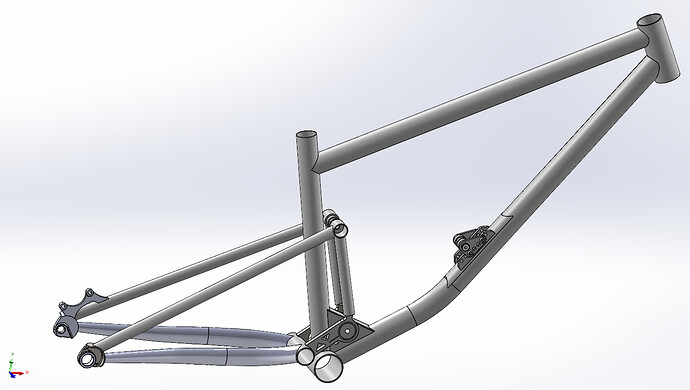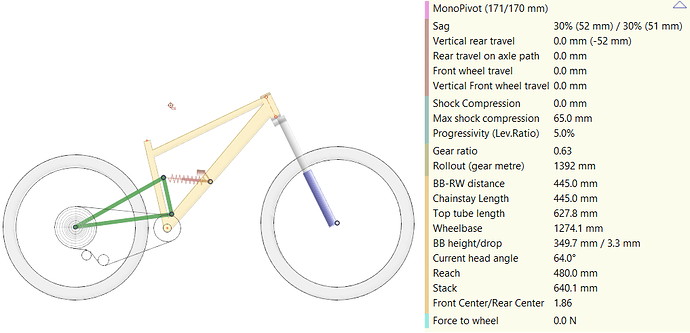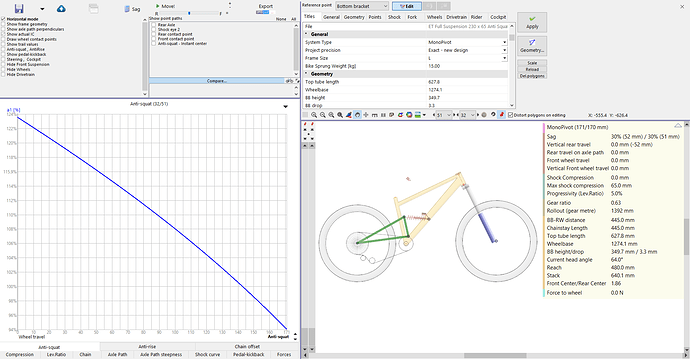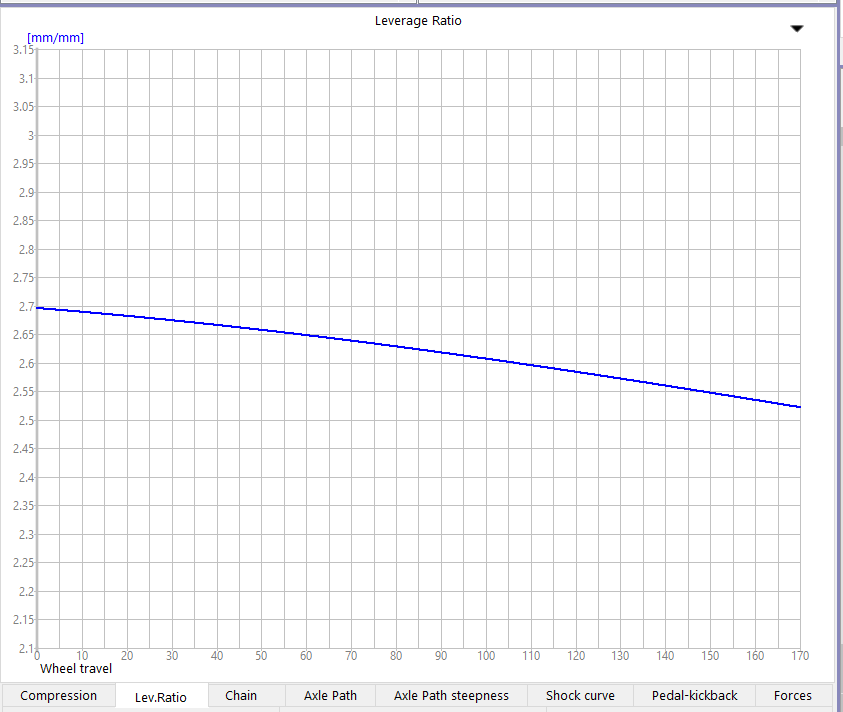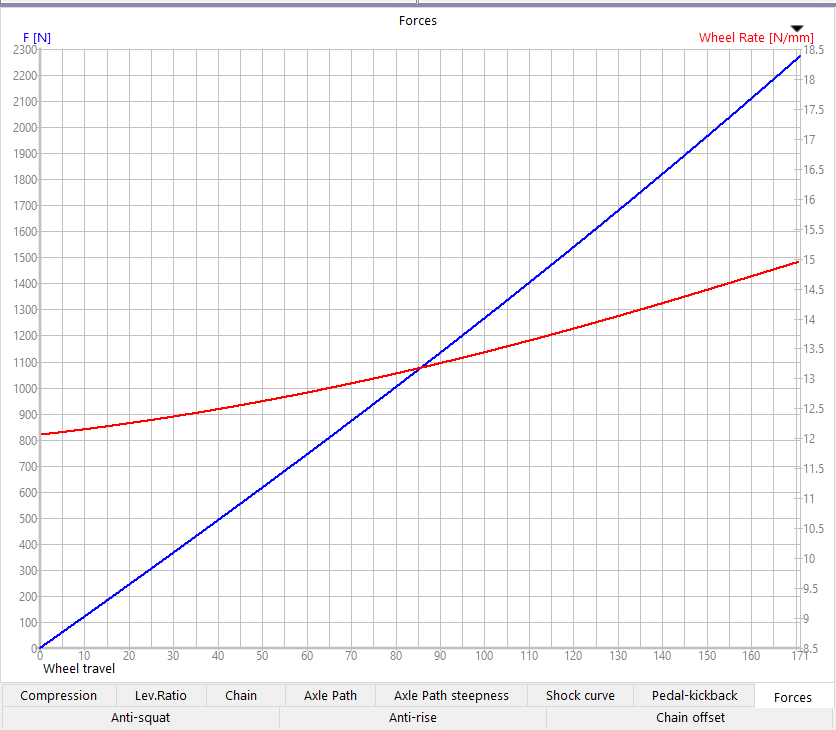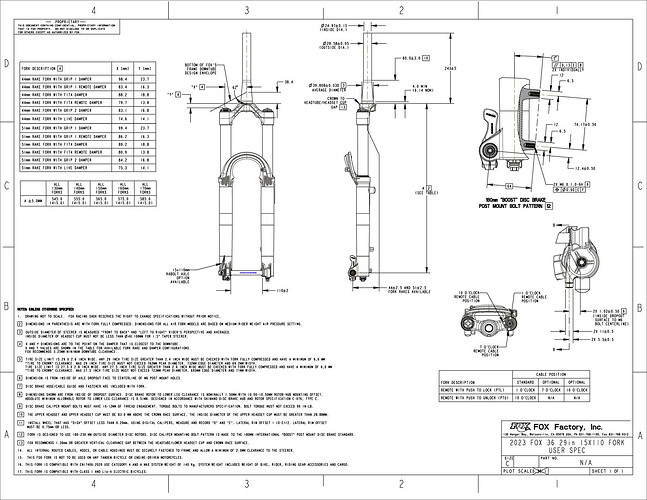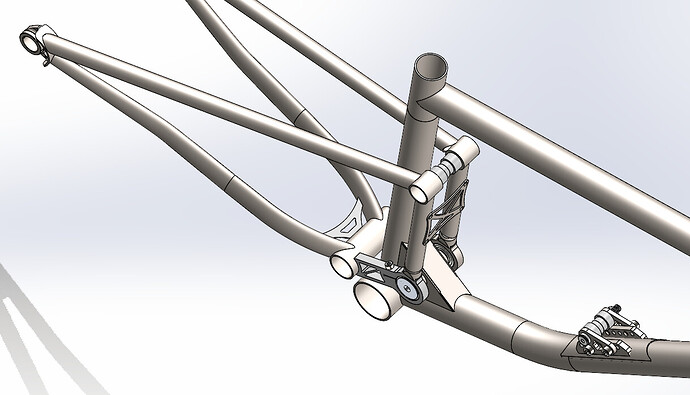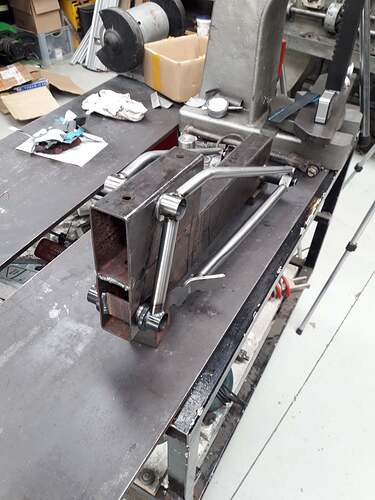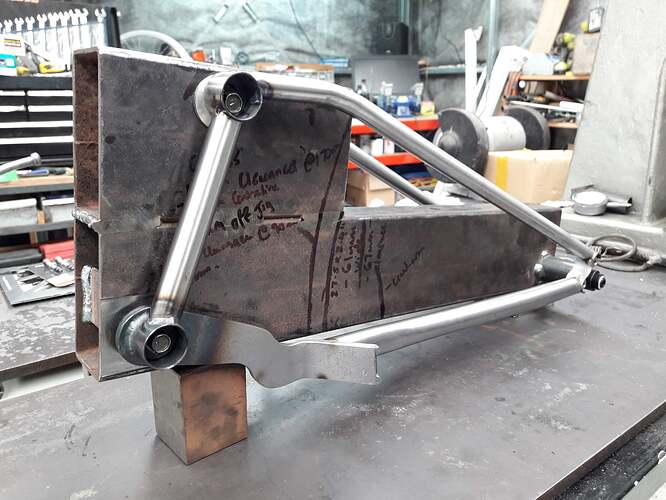First Build Log post after lurking for a while working on the design. I’ve got a few frames under my belt now and I’m looking to step up to the next level.
This one will be my first full suspension frame, my second TIG welded frame, and my 4th frame overall.
The bike is a 170/170 mullet single pivot with a 230x65 shock. Design-wise I’m taking a lot of cues from Starling along with a couple of build logs from this forum.
I’m looking for feedback on kinematics and tube sizing, as well as general ideas of course. I want to nail all those details down so I can pull the trigger on the design. I will post some pics of CAD and Linkage.
Tubes:
DT: 1.5x.035 (38.1x.9mm) single bend 4130 tube (Bend by Bike Fab Supply)
TT: 1.375x.035 (34.9x.9mm) 4130 tube
ST: 1.375x.035 (34.9x.9mm) 4130 tube
CS: Zero Uno S-Bend MTB MPV190B6022 (Bike Fab Supply)
SS and Shock Upright: .75x.035 (19x.9mm) 4130 tube
Shock Doubler Plate: 1.5x.035 (38.1x.9mm) 4130 tube
Main Pivot Tabbed Box: .06 (1.5mm) thick 4130 plate
Pivot Yoke Tube: 1.25x.065 (31.8x1.65mm) 4130 tube
Pivot Yoke Arms: .375 (9.52mm) thick 4130 plate
Dropouts: Paragon UDH
BB: T47
HT: 44x110mm
